The Tour
A group of us from Mangala Vihara (Buddhist Temple) embarked on 10-day (April 22nd to May 1st) exploratory tour of Buddhist sites in Sri Lanka. We traversed the island, stepped on holy grounds and historical sites and visited temples, meditation centres, shrines and archaeological sites of the ruins that were once palace, shrine or temple. Many of the historical sites had withstood destruction and test of time with some being rebuilt or restored. Unfortunately, there were several which were abandoned and left in ruins.
Brother Hing Seng Huat, one of the members on our entourage and from the MV Mandarin Dhamma class was so inspired by what he saw that he wanted to be ordained as a novice monk in Sri Lanka. Bhante Seelananda, our Assistant Resident monk at MV who was on home leave in Sr Lanka and his fellow brother monk Bhante B. Amitagavesi graciously assisted to fulfill Brother Hing’s calling.
Bhante Raja, Bhante Seelananda and Bhante Amitagavesi and a group of well-wishers accompanied him in search for a suitable venue for his noble aspiration. While we often hear the common phrase “business cum pleasure” trip in a typical commercial world, this incident should aptly be called “reverence cum ordination” trip. We conducted Puja and also gave dana in the form of candy and stationery to the local school children.
Other than stepping on holy grounds and historical sites in Anuradhpura, Polonnaruwa, Kandy, Colombo and other states, we also attended a cultural show, visited a herbal pharmacological factory, waterfall, beach, bookshops and of course Colombo YMBA. Last but not least we witnessed the ordination of a novice monk.
Due to space constraint I will selectively describe some sites that are of significance in the contribution and propagating of the Buddha’s teaching.
Some Great Buddhist Sites
I cannot effectively put in words the feelings that came when I stood at the various sites where the Buddha had been known to visit or stayed at. The word euphoria is an understatement when we realised that we were treading the paths where the Buddha had walked or stood on. I am sure that all the others in our group had similar feelings and inspiration.
Aluvihara
Since the Parinibbana (paranibbana) of the Buddha, the Teachings were passed down by the Sangha community through the tradition of verbal transmission of teachers to students and monks to monks. It was not until the Fifth Buddhist Council held in Aluvihara that the Tipitaka was first committed in writing in the first century B.C. Not surprisingly, the Aluvihara Cave Temple in Sri Lanka is now a religious and historical site of the Buddhist community. A visit to the site helped us to visualise the conditions under which the Tipitaka were committed in writing on ola leaves from the Talipot tree at that time.
At the museum we were treated to a demonstration on how texts were scratched on the leaves with a stilo, which is a pointed steel dagger-like instrument. An ink made from berries was rubbed over the whole page. The ink was gently removed from the leaves but remained stained in the texts.
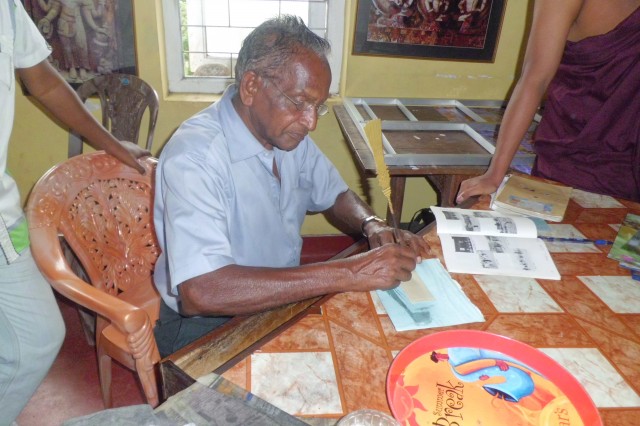
Texts written on leaves with a stilo, which scratched the letters into the soft leaves. Ink made from berries was rubbed over the page and then gently removed, so that only the indentations retained the colour.
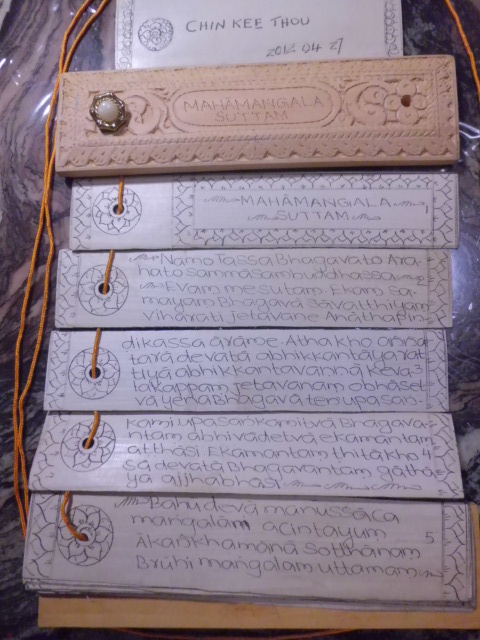
Suttam written on ola leaves
Temple of the Sacred Tooth Relic
The Sri Dalada Maligawa: Temple of the Sacred Tooth Relic at Kandy where a canine tooth of Lord Buddha was enshrined and venerated. At the temple and we viewed the relic and held morning puja led by Bhante Seelananda and felt closeness to the Buddha.
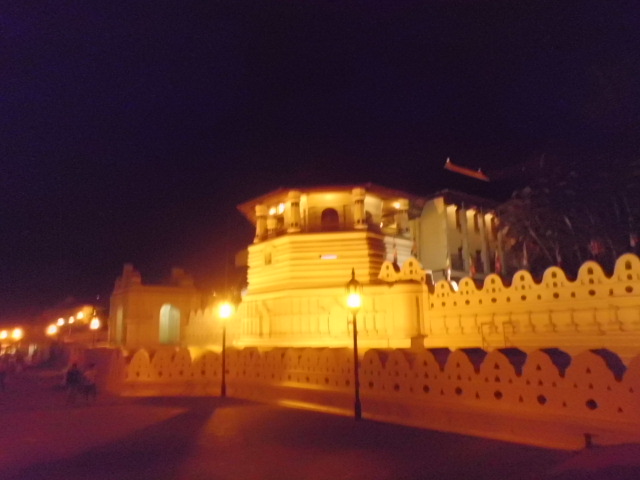
Night scene Sacred Temple of the Tooth Relic
Anuradhapura and Polonnaruwa
Anuradhapura and Polonnaruwa were ancient cities filled with ruins. Stepping on the ground of the once magnificent palace and city was an enthralling experience. The vast archaeological site with many ruins and Stupas and shrines left us captivated in the mist of serenity and placid environment, which underscored the Buddha’s teaching of “anicca”.

Ruin of Royal Palace at Anuradhapura

Archaeological ruins in Anuradhapura
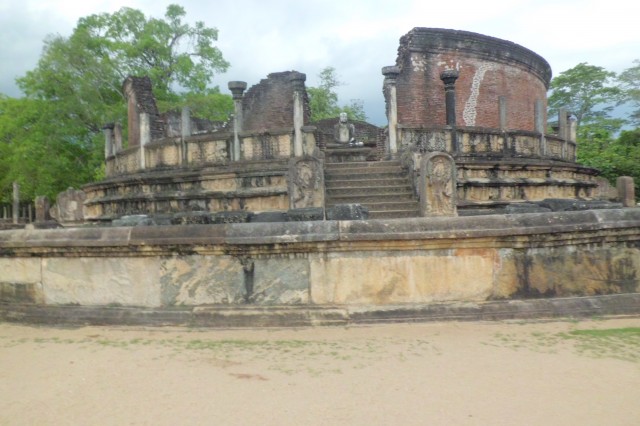
Ruin of stupa in Polonnaruwa
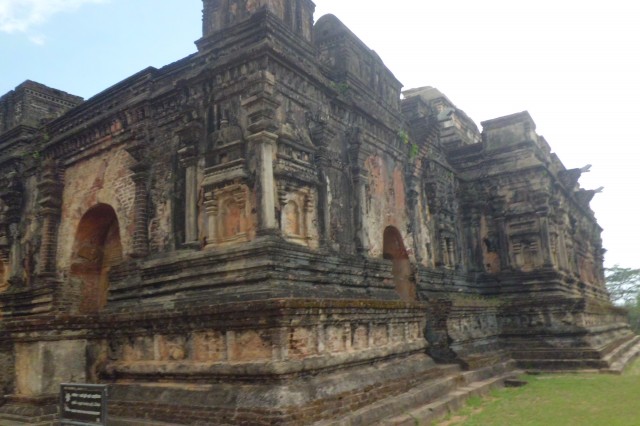
Ruin of temple in Polonnaruwa
Kelaniya
According to the Mahavamsa the Buddha stopped at Kelaniya and mediated in a dispute between two yakkha chiefs and out of gratitude they gave him a beautiful gold and jewel-studded throne. A stupa was built at Kelaniya and it is popularly believed to enshrine the Buddha’s throne.
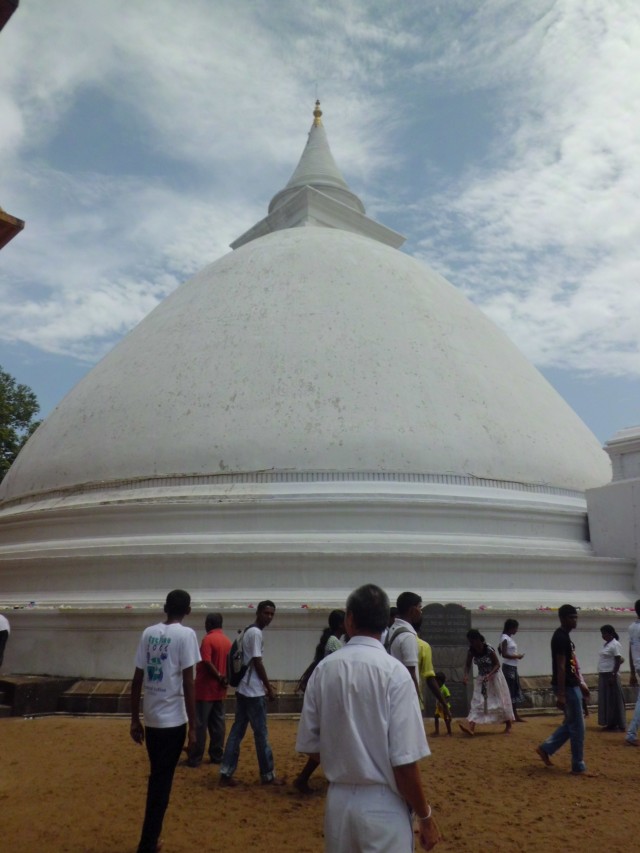
Stupa where the Buddha's throne is enshrined
Kelaniya Rajamaha Vihara or the Royal Kelaniya Temple is filled with paintings on the walls and ceiling depicting Jataka Stories to inspire virtues of compassion. On the wall are also displayed a literary depiction of Buddha’s battle against the defiling elements (Mara).
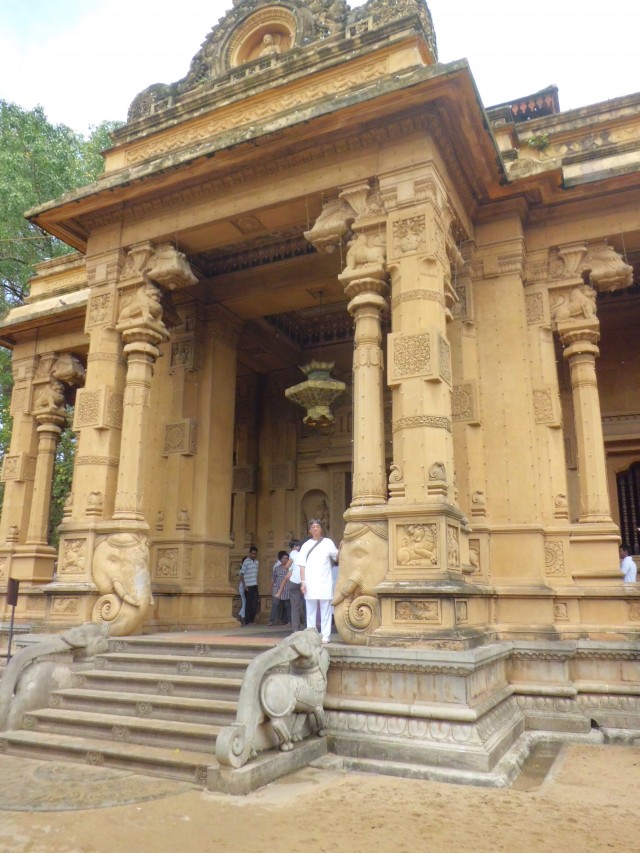
The Royal Kelaniya Temple
Sri Maha Bodhi
Sri Maha Bodhi is a sacred fig tree is said to be a sapling from the historical Bodhi Tree under which Buddha became enlightened. It was planted in 288 BC and is the oldest living human-planted tree in the world with a known planting date.
We offered robe to the sacred tree and also held a Puja session in the shrine hall led by Bhante Seelananda.
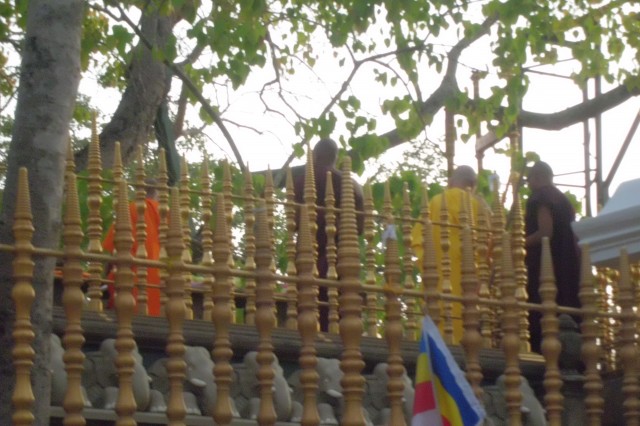
Bhantes offered robe to the Bodhi Tree
The Golden Temple of Dambulla
Also known as Dambulla Cave Temple, it is a UNESCO World Heritage Site since 1991. The rock towers 160m over the surrounding plains and the temple consists of 5 separate caves that was hewn from a big rock. The five caves have been converted into shrine rooms. Each of the shrine rooms houses a collection of one hundred and fifty statues of the Buddhist Order and the country’s history. These statues and paintings are representative of many epochs of Sinhala sculpture and art. The Buddha statues are in varying sizes and attitudes – the largest being 15 metres long. One cave has over 1,500 paintings of Buddha filling up the ceiling.
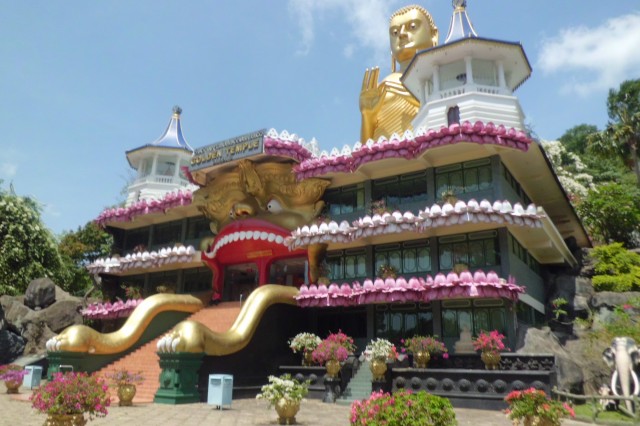
The Golden Temple - Dambulla
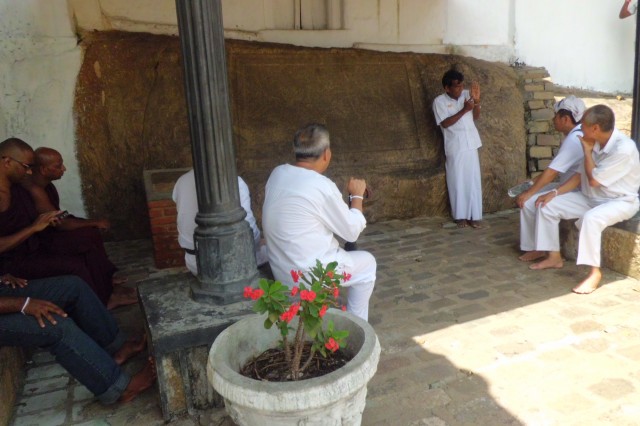
Briefing by guide at foot of the Rock Temple - Dambulla
The Cave Of Arahant Mahinda
On the slop of the Mihitale peak is a cave known as Mihindu Guhawa or the cave of Arahant Mahinda, where he had resided. The most famous and incidentally the most sacred to Buddhists, the cave has a flattened slab on which Thera Mahinda was said to rest. It was said that almost his entire 48 years in Sri Lanka, Arhat Mahinda had resided at the cave. No wonder, it is a most sanctified place for the Buddhists to worship when they visit Mihintale.

Entrance of Mahinda's Cave
The journey continues in the next episode – “An Encompassing Sri Lank Trip Part II – Ordination and Rest & Recreation”
Contributor: Chin Kee Thou



